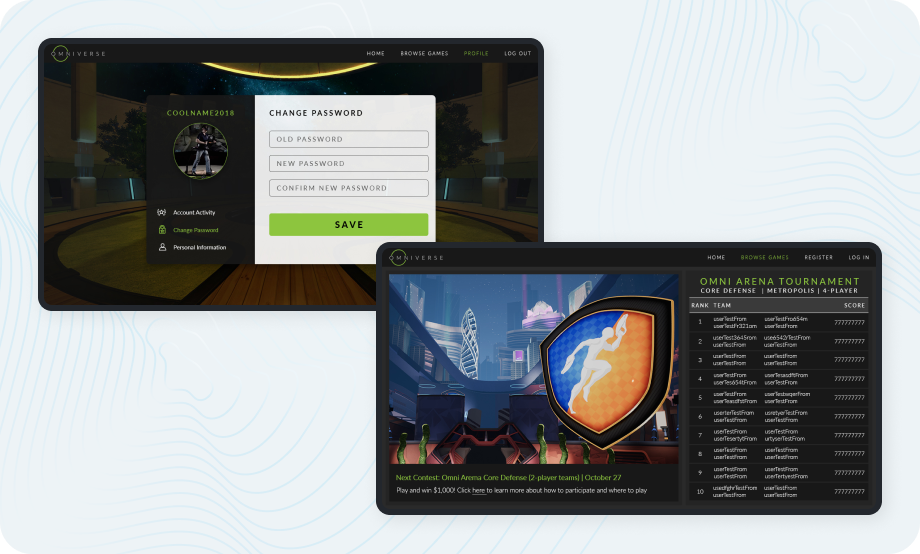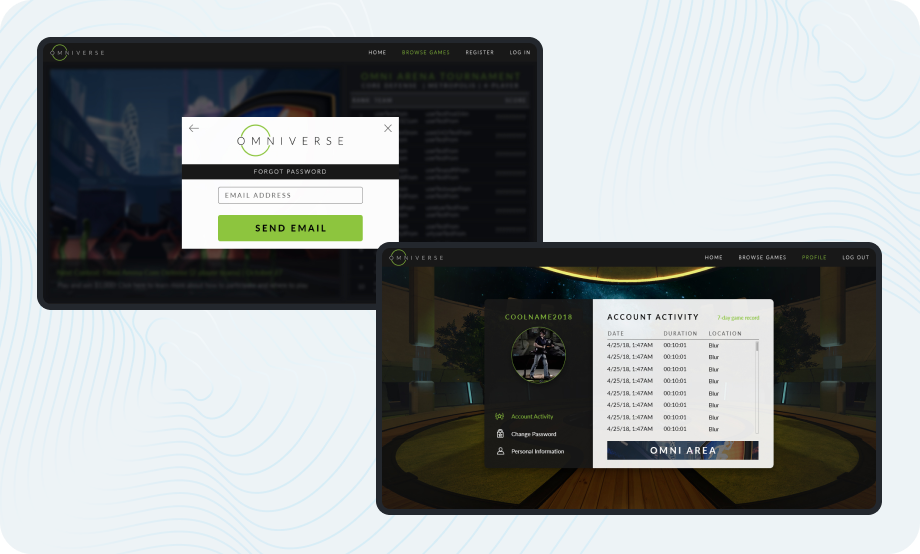
Custom VR Software Development for Immersive VR Sports Experiences
Omni aimed to transform VR with Omni Arena—a compact booth with motion treadmills and multiplayer gameplay. IT Craft used its AR/VR development expertise to deliver a synchronized, autonomous system.
- Team 7 team members
- Type VR sports and entertainment platform
- Industry AR/VR, Gaming, Esports
- Platforms VR booths, entertainment venues, gaming arenas
About the project with Omni Arena
IT Craft collaborated with Omni, a US-based startup, to develop Omni Arena — a turnkey AR/VR platform combining motion treadmills, multiplayer gameplay, and automated user flow for immersive group VR experiences.
The system provides synchronized play for multiple users, provides for competitions and video replays, manages onboarding via touchscreens, and enables payment processing through virtual credit systems.
The client wanted to offer a tight, high-impact VR experience with minimal staff intervention, delivering consistent multiplayer experiences, and deployment ease in entertainment centers around the world.
The main goal was to create a fully automated, immersive VR arena that increases venue revenue through repeat plays, streamlined onboarding, and competitive gaming features.

Client’s expectations
- Upgrade prototype into a synchronized, production-ready AR/VR system
- Ensure latency under 20 ms for audiovisual and gameplay sync
- Enable real-time replay and information display across multiple screens
- Improve system stability and reduce session failures
- Minimize staff involvement and automate user flow
- Support mobile payments, loyalty systems, and contests
Technologies:
 .NET 5
.NET 5 .NET Core 2.1
.NET Core 2.1 Unreal Engine
Unreal Engine AngularJS
AngularJS Angular 7+
Angular 7+ Electron
Electron Raspberry Pi
Raspberry Pi Docker
Docker Docker Swarm
Docker Swarm GitLab
GitLab GitLab CI
GitLab CI Mosquitto
Mosquitto Minio
Minio LiteDB
LiteDB
Omni approached us with an idea of building a small, multiplayer VR arena based on motion treadmills and interactive gameplay. We had to transform the idea into a stable, scalable AR/VR software through full-cycle development, re-design of architecture, and hardware-software integration.

We supported the client across the entire development lifecycle — from system reengineering to VR game library integration, hardware sync, and payment automation. Specifically, our team delivered:
- Full integration of hardware control and multiplayer AR/VR game logic
- System architecture overhaul for seamless real-time coordination between components
- Integration of the Omniverse game library and Omni SDK for external VR developers
- Real-time multi-display playback, game replays, and video recording
- Touchscreen-based onboarding and automated hardware calibration
- Virtual wallet system with credit point conversion and in-app payments
- Contest and tournament engine for local and nationwide competition support
- Stable cloud synchronization, even in low-bandwidth or partially offline venues
Results of the collaboration with Omni
The end product Omni Arena was a branded VR solution for high-volume entertainment venues, offering an immersive group play environment with minimal staff interaction. System reliability, automation, and engaging play content made it a reliable revenue stream for operators.
Key outcomes included:
- Scaled user adoption through intuitive onboarding and automated flow
- Boosted player retention via integrated competitions and reward systems
- Streamlined operations, requiring only a single staff member per Arena
- Significantly enhanced system stability and fault tolerance
- Laid the groundwork for seamless global deployment and third-party game integration